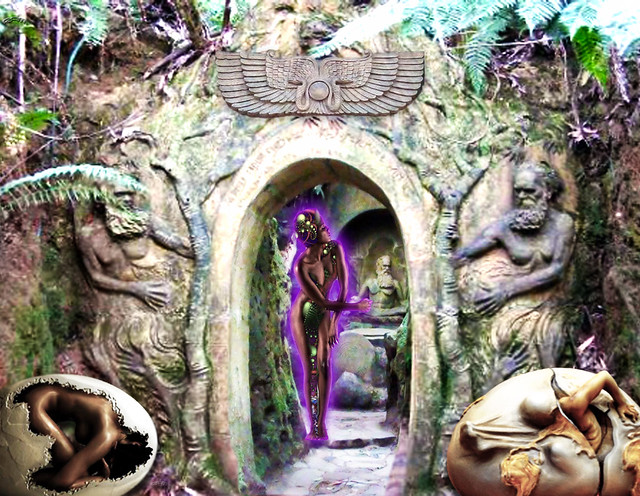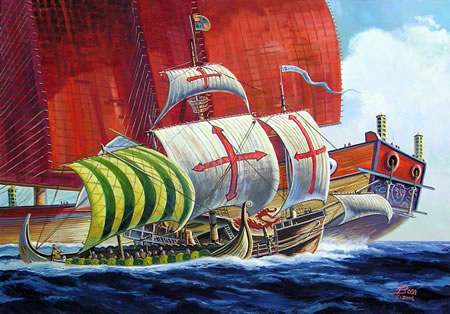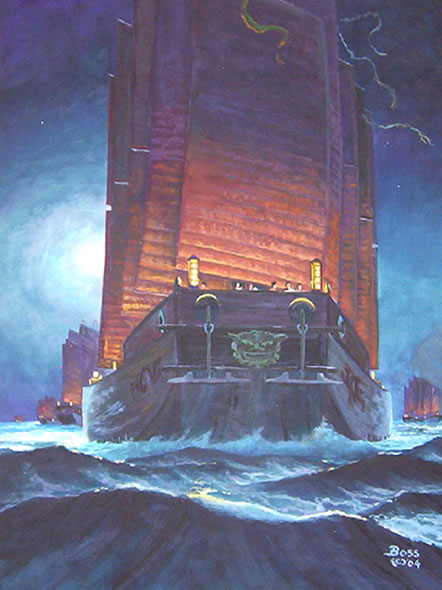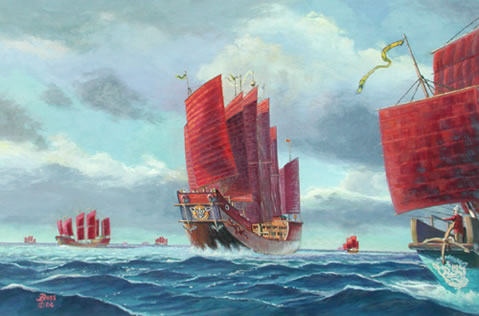Have You Heard of The Great Forgetting?
It Happened 10,000 Years Ago & Completely Affects Your Life
It Happened 10,000 Years Ago & Completely Affects Your Life

The Great Forgetting refers to the wealth of knowledge that our culture lost when we adopted our new civilized lifestyle. The knowledge that allowed indigenous cultures to survive, the knowledge that we had once also been tribal and the understanding that we were but one mere culture of thousands. All of this disappeared in a few short generations.
The Great Forgetting accounts for an enormous cultural collapse as once tribal people found themselves in a new and strange mass centralized society. New beliefs, new ways of life rushed into this cultural vacuum to fill the void. But without being tested by natural selection over thousands of years this new culture was evolutionarily unstable.
It is only recently that the Great Forgetting has been exposed. Understanding it holds the key to making sense of our destructive culture. And remembering what it is that was forgotten holds the key to our future.
How The Great Forgetting Took Place
They began to practice an intensive form of agriculture which enabled them to live in a settled location.
They developed large food surpluses which led to a population and geographic explosion. What began as farming communes eventually turned into villages, then into towns, and then kingdoms. Civilization began.
But it was a long time before anybody began to write down history, several thousand years later in fact. What happened in between was that the people of this culture forgot what had happened. They forgot that they once were hunter gatherers and foragers who lived a nomadic lifestyle. They assumed that mankind arrived on the planet at the same time as civilization. They assumed that civilization and settled agriculture was the natural state of mankind, as natural as living in a herd and grazing is to buffalo.
Naturally this gave rise to the belief that we were only a few thousand years old, that mankind had began when civilization began.
The primitive cultures that lived on the fringe areas of early civilization would appear to suggest that humans had lived another way. But they were easily explained away. They had fallen from the natural state of civilization; they had degraded into savagery. They had once lived as fully fledged humans but they had forgotten the way and now they were inferior, they were sub-human.
The Philosophical Roots of Our Culture
The philosophers, historians and theologians of the ancient civilizations: Sumer, Egypt, Assyria, Babylon, India and China wove the Great Forgetting into their work.
Those that followed – the Hebrew authors of the Bible, Moses, Samuel, Elijah, Isaiah and Jeremiah, the great Western thinkers, Socrates, Plato and Aristotle and the great Eastern thinkers Lao Tzu, Gautama Buddha and Confucius - all wove the Great Forgetting into their work.
The thinkers of more modern times also followed suit, they didn't take any Great Forgetting into account. Why would they? They had no reason to believe that humans had not come into this world as civilization builders. They had no reason to believe that this wasn’t our natural state. So Thomas Aquinas, Francis Bacon, Galileo Galilei, Isaac Newton and Rene Descartes carried on our culture with the Great Forgetting at its root.
The Truth Is Revealed
Looking back on it one could assume that the exposure of the Great Forgetting would have been a momentous discovery. It should have shook the very foundations of our way of thinking, the very foundations of our culture. One could have assumed that this would have led to some fundamental changes about who we are and how we should live.
But it didn’t. The Great Forgetting just got explained away. Instead of admitting that two very different and legitimate ways of living had been adopted by mankind in his history the thinkers of the 19th Century came up with this: man may have been born into this world as a primitive savage but he was destined to become a civilization builder.
In essence they said: “Who cares that we didn’t arrive as a civilization builder. It was our destiny to become a civilization builder. Now that we are here who cares what went before us. Those people that lived before us were just a precursor to us. They weren’t important.”
We
didn't arrive as a civilization builder. But it was our destiny to become one.
Instead of accepting that they were part of history the historians relegated them to pre-history. They were before history, because history began when civilization began. We are the good stuff; we are the ones who are fulfilling the destiny of mankind. We are the ones who should be studied.
The Myth of the Agricultural Revolution
This is how it was explained: Before the agricultural revolution humans didn’t know how to farm or how to practice any kind of agriculture. They lived as hunter gatherers and foragers. Once they discovered farming they were then able to settle down and build civilization. The agricultural revolution was the foundation from which all the greatness of humanity stems.
It was explained in such a way that leads us to believe that the agricultural revolution was:
- Something that happened more or less by everybody.
- Something that happened more or less at the same time.
This myth has permeated our culture since the 19th century thinkers created it to support their idea that civilization is the divine destiny of mankind. However the agricultural revolution was not a revolution and it had absolutely nothing to do with agriculture.
Agriculture had been practiced in many different ways and forms by thousands of different cultures around the globe. Agriculture is not unique to civilization. What is unique to civilization is a particular form of agriculture, that Daniel Quinn terms totalitarian agriculture.
The
Agricultural Revolution had absolutely nothing to do with agriculture.
This generates huge surpluses which generates rapid population growth and rapid geographical expansion.
Through sheer weight of numbers totalitarian agriculturalists overrun neighboring regions obliterating other cultures and their way of life. The agricultural revolution wasn't something that started and finished thousands of years ago. It is still happening today, being driven forward by our cultural doctrines which tell us that the earth is a foe that must be conquered.
The agricultural revolution wasn’t about humans finding a better way to live. It was about a single culture out of thousands beginning to live in a way that only worked through exponential growth. Civilization didn’t spread because it was a good idea. Civilization spread through force. The exponential growth of the totalitarian agriculturalists displaced anybody and everybody else. It wasn’t a revolution; it was an experiment that became a runaway train.
So when the Great Forgetting was exposed it was quickly covered up. Our culture went from believing this:
First Humans
|
Us
|
Us
To believing this:
First Humans
|
Paleolithic Humans
|
Mesolithic Humans
|
Neolithic Humans
|
Us
|
Paleolithic Humans
|
Mesolithic Humans
|
Neolithic Humans
|
Us
When in fact the reality looks more like
this:
First Humans
|
Paleolithic Humans
|
Mesolithic Humans
|
Neolithic Humans
|
Great Forgetting
|
Paleolithic Humans
|
Mesolithic Humans
|
Neolithic Humans
|
Great Forgetting
|
|
10,000 other cultures Us
10,000 other cultures Us
A New Way of Thinking
The answer to this ecological crisis doesn’t lie with bumbling along the same way we have been trying to perfect for ten thousand years. It doesn’t lie with manically trying to fix a way of life that can only succeed by growing. Eventually it was going to grow so big that it would run out of room to keep going. That time has arrived now.
Instead of trying to tweak and change our lifestyle to somehow make it work we need to have a complete overhaul of the way we live.
Now we can study indigenous cultures and say they haven’t degraded into savagery.
They haven’t been left behind in the march to progress; they aren’t the most undeveloped peoples of civilization.
They live in a way that is completely different to us.
A way that is not inherently inferior and a way that is in no means a precursor to civilization. Now we can look on them with fresh eyes, with newfound respect and listen to what they have to say.
They have lived sustainably on this planet for millions of years. We have much to learn from them.
We can now see that with the ecological crisis the problem is not humankind. Humans are not parasitic. Humans can and have lived sustainably. The problem is a single culture. The culture that began 10,000 years ago with totalitarian agriculture and still practices it today. We don’t have to change humans. We don’t have to fix them. We just have to abandon a single destructive culture.
We aren’t 99% of the world’s population because we have a better way of living. We are 99% because our culture grew and displaced those who didn’t need to grow.
We can find a new way.
Help spread the word by sharing this page on your favorite social networking sites. Thanks for your help!
This article summarizes the ideas of Daniel Quinn, first written about in The Story of B, which was a sequel to Ishmael. The longer, original essay can be read here, and comes highly recommended.
For further reading, see: Limited Wants, Unlimited Means: An Intro to Hunter-Gatherer Economics
By Deep Ecology Hub
/ deep-ecology-hub.com
via Films For Action @ http://www.filmsforaction.org/articles/have-you-heard-of-the-great-forgetting/#.Ve9X_kJRrec.facebook
Jynki – Woman of the Sun
For more information about indigenous wisdom see http://nexusilluminati.blogspot.com/search/label/aboriginal%20people
and http://nexusilluminati.blogspot.com/search/label/deep%20ecology
- Scroll down
through ‘Older Posts’ at the end of each section
Hope you like this
not for profit site -
It takes hours of work every day by
a genuinely incapacitated invalid to maintain, write, edit, research,
illustrate and publish this website from a tiny cabin in a remote forest
Like what we do? Please give anything
you can -
Contribute any amount and receive at
least one New Illuminati eBook!
(You can use a card
securely if you don’t use Paypal)
Please click below -
Spare Bitcoin
change?
Xtra Images by R. Ayana – https://farm9.staticflickr.com/8208/8196106538_c7cd832cd4_b.jpg
Video - https://youtu.be/5kVbyagpbzU
For further enlightening
information enter a word or phrase into the random synchronistic search box @
the top left of http://nexusilluminati.blogspot.com
And see
New Illuminati – http://nexusilluminati.blogspot.com
New Illuminati on Facebook - https://www.facebook.com/the.new.illuminati
New Illuminati Youtube Channel - https://www.youtube.com/user/newilluminati/playlists
New Illuminati’s OWN Youtube Videos
-
New Illuminati on Google+ @ For
New Illuminati posts - https://plus.google.com/u/0/+RamAyana0/posts
New Illuminati on Twitter @ www.twitter.com/new_illuminati
New Illuminations –Art(icles) by
R. Ayana @ http://newilluminations.blogspot.com
The Her(m)etic Hermit - http://hermetic.blog.com
DISGRUNTLED SITE ADMINS PLEASE NOTE –
We provide a live link to your original material on your site (and
links via social networking services) - which raises your ranking on search
engines and helps spread your info further!
This site is published under Creative Commons (Attribution) CopyRIGHT
(unless an individual article or other item is declared otherwise by the copyright
holder). Reproduction for non-profit use is permitted
& encouraged - if you give attribution to the work & author and include
all links in the original (along with this or a similar notice).
Feel free to make non-commercial hard (printed) or software copies or
mirror sites - you never know how long something will stay glued to the web –
but remember attribution!
If you like what you see, please send a donation (no amount is too
small or too large) or leave a comment – and thanks for reading this far…
Live long and prosper! Together we can create the best of all possible
worlds…
From the New Illuminati – http://nexusilluminati.blogspot.com




